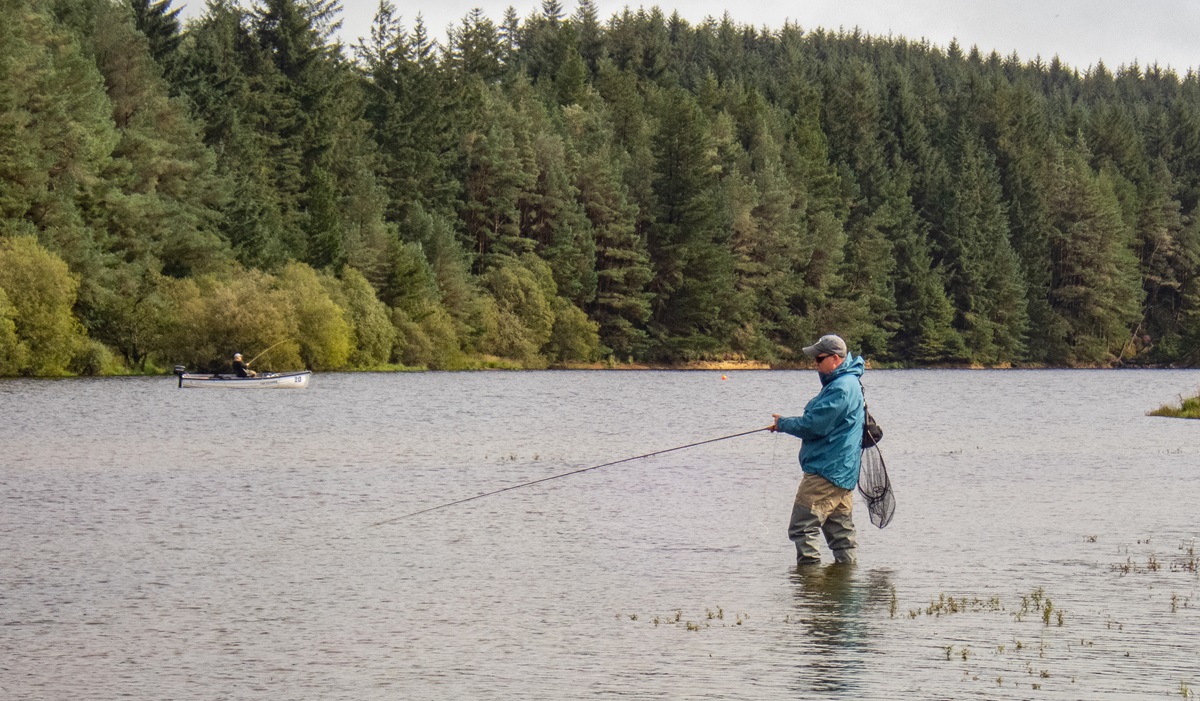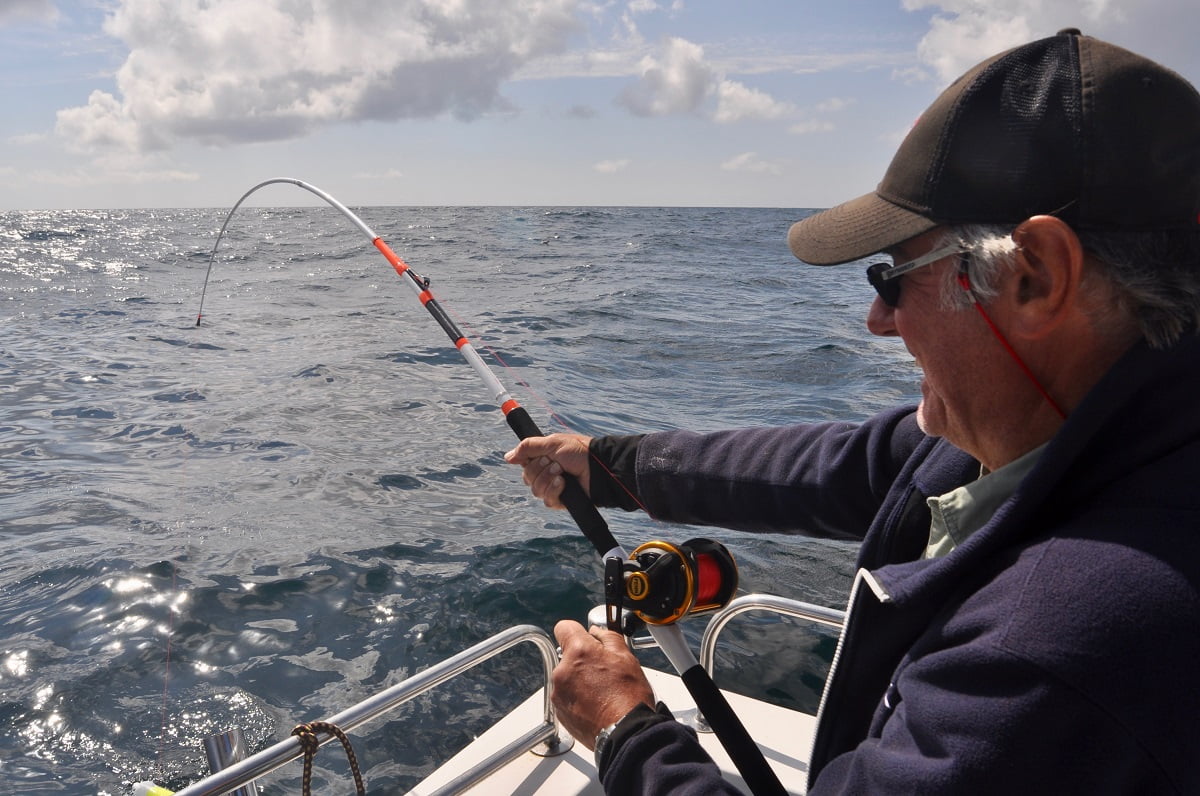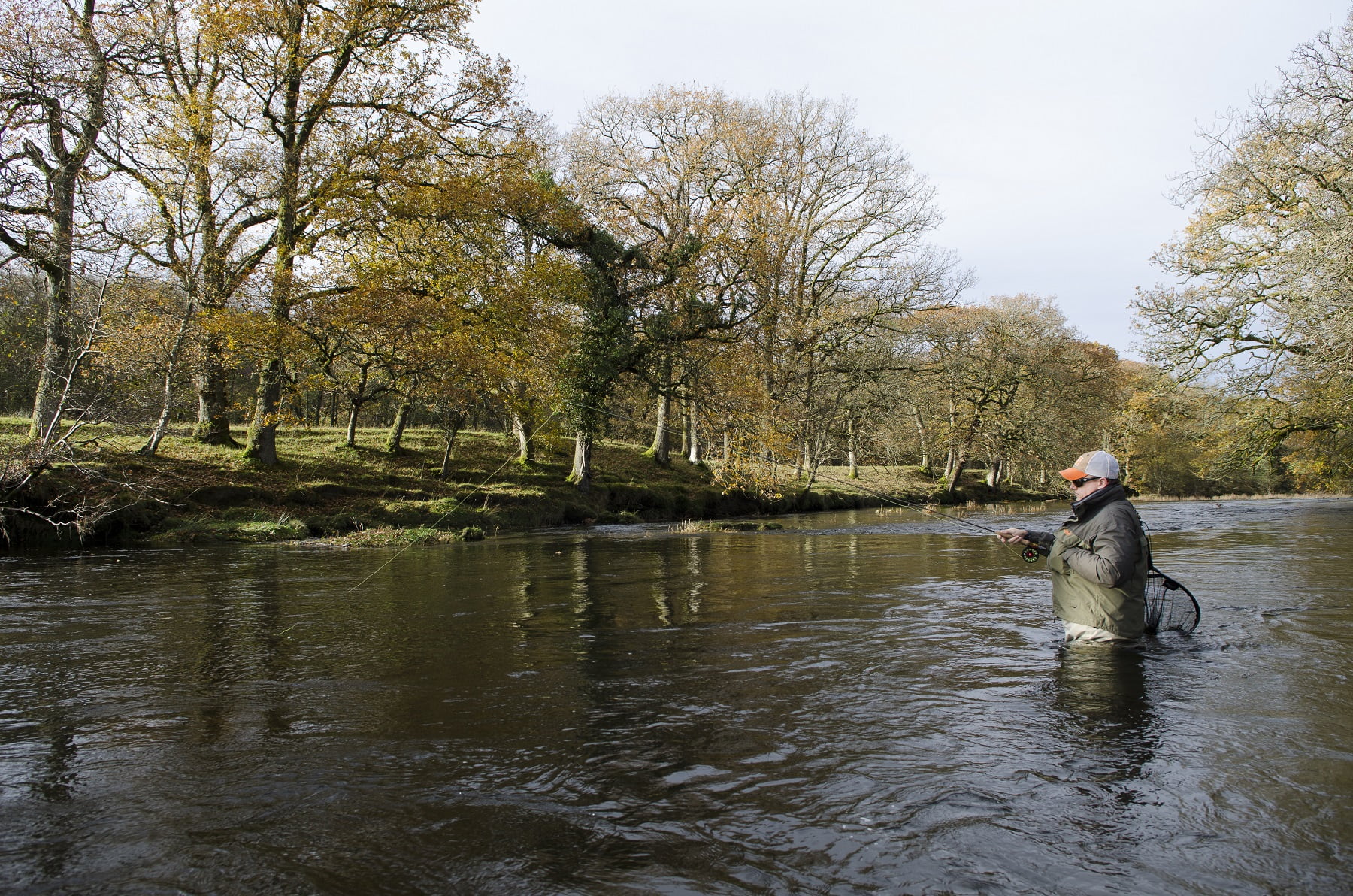Beginner’s Guide to Winter Stillwater Fly Fishing in Wales
Think fishing in winter is too cold and difficult? Think again! Many stillwaters in Wales stay open all year, offering great chances to catch hard-fighting trout. With the right approach, you can enjoy a successful day on the water – even if it’s chilly.
This guide is designed for beginners, covering the basics of winter stillwater fly fishing, from choosing the best places to fish, to selecting the right flies and tactics.
Why Fish in Winter?
Even though it’s cold, rainbow trout (and other varieties of trout) stay surprisingly active in stocked lakes and reservoirs. In fact, cooler temperatures really suit trout, with water temperatures from 4°C to 13°C being the optimum.
This temperature range is very similar to what we experience during a typical UK winter. As result winter stillwater trout are often in great condition, feeding and fighting well due to the extra oxygen in the water.
Welsh rivers have a closed season for trout, but stillwaters remain open, making them the best choice for winter fishing, as well as being a great place for beginners to learn how to fly fish.
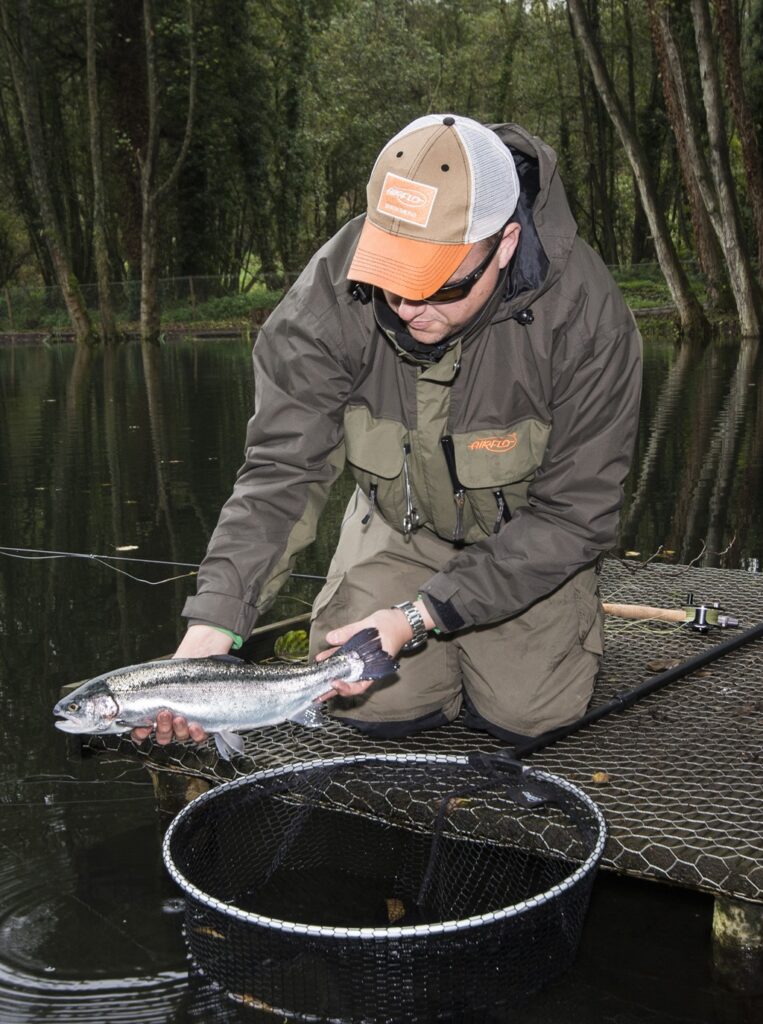
What Tackle Do You Need?
You don’t need expensive fly fishing gear to get started! Here’s a simple kit list:
Fly Rod: The most popular configuration for stillwater fly fishing from the bank is a 9ft 6” rod, taking a number 7 fly line. This will be able to handle almost any fly fishing technique, and will be easy to cast, even in windy conditions, yet still allow for reasonably delicate presentation. Rods of 9 ft or 10 ft, with 5, 6 or 7 weight lines are also suitable for small stillwater fishing.
Fly rods for beginners should have a user friendly ‘middle to tip’ action. Examples include the Greys Lance, Airflo Super Stik 2, Vision Hero, Shakespeare Oracle 2 stillwater and Wychwood Truefly. Greys also do the K4ST kit, which includes everything you need at a low price.
Fly Reel: The reel is mostly there to house the fly line, as most fish are ‘played’ by pulling the line in by hand, unless they are particularly powerful. When buying a fly reel, a ‘large arbour’ and a basic drag are features to look out for. Match the size of the reel with the rod e.g a 7/8 size reel will be suitable for a 7 or 8 weight fly rod and matching line.
For an inexpensive reel, the Greys Cruise Cassette is a good choice, along with the Airflo Switch Black, and the Greys Fin.
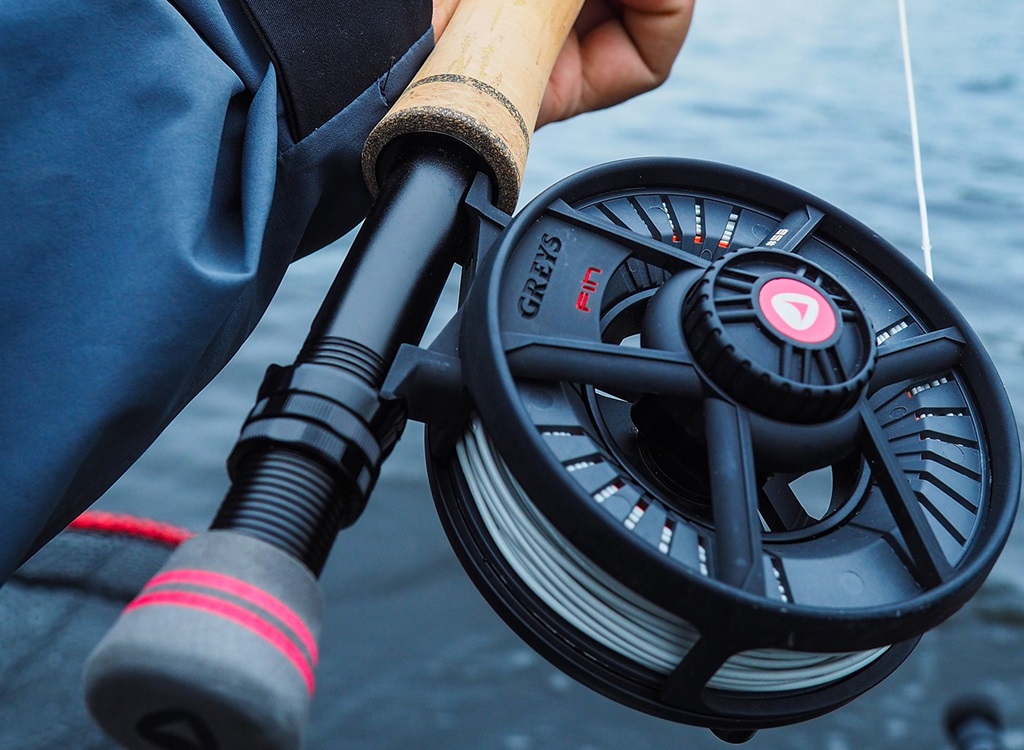
Fly Line: A floating line is easiest for beginners to learn with, and for 90% of the time a floater will be all you need when fishing. Fly lines vary in price from £20 to over £100, but for a beginner start at the lower end, when you are learning to cast.
An intermediate (a slow sinking fly line) is a useful addition for a second fly line, these allow you fish fish subsurface.
A few suggested fly lines for beginners include the Rio Mainstream, Airflo Forge, Greys Platinum Plus and Aqua Pro.
Polarized Sunglasses: Helps you see fish by cutting through surface glare and protects your eyes from hooks or a casting accident. There are lots of choices out there, with Fortis, Vision and Snowbee being inexpensive but good brands.
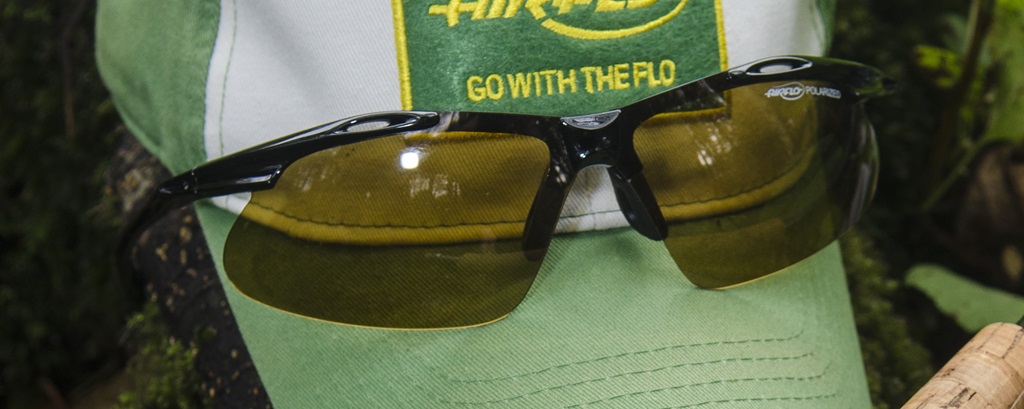
Warm, Waterproof Clothing: Layers and a hat will keep you comfortable. Waterproof boots are also worth wearing. A 3/4 jacket will be very useful, with good options available from Greys, Airflo and Scierra.
Landing Net & Forceps: Useful for safely handling fish. Both of these items are usually a requirement when visiting a fishery. Forceps can be used to ‘de-barb’ flies as well as releasing fish. A folding net with a long handle is an advantage, such as the Wychwood Rover, Snowbee Ranger, or Sharpes of Aberdeen.
Leader & Accessories: Leader material of 6lb and 8lb fluorocarbon, a set of nippers, a vest or fishing bag will all come in handy. Strike indicators of various sizes are very useful to have as well.
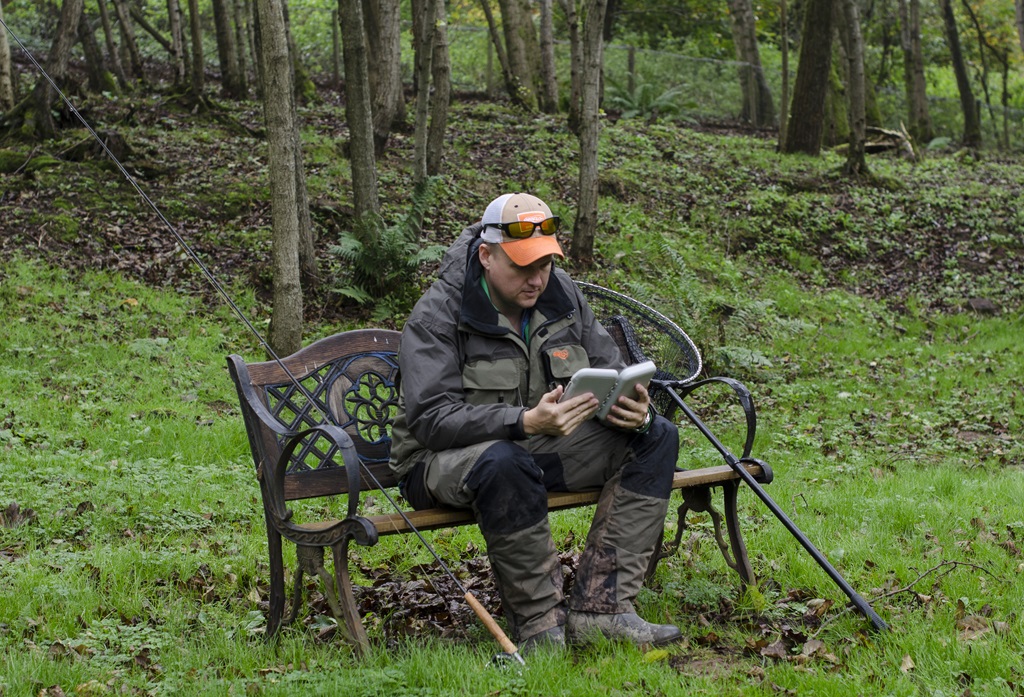
Confidence Flies for Winter Rainbow Trout
In winter, trout move slower and often feed deeper in the water. These flies will work well. Keep your selection simple to start with and fish them with confidence! (Images: fly patterns from Fulling Mill)
Attractor Patterns:
Cats Whisker (1) – A classic fly that grabs attention. The bead chain eyes at the head to impart an undulating motion to the fly when retrieved. Because of the fluorescent bright lime green body this is a deadly pattern, especially in coloured water. Size 10.
Black & Green Blob (2) – A great choice for winter. Fitted with a bead, it can be fished on a floating line and fished slowly or with long strips and pauses. Size 10
Pink Egg (3) – Devastatingly effective, eggs can be fished on any line density and a variety of retrieves. However one of the best ways is to fish it 5 foot under a ‘bung’ (Indicator) static on a floating line. Size 12.
Nymphs & Naturals:
Apps Bloodworm (4) – A highly effective pattern that has a huge amount of movement due to its flexi floss legs that move even with the slowest of retrieves on any line. Size 10
Black Buzzer (5) – A must-have for all trout anglers designed to imitate the natural chironomid (midge) pupa. This black version is ideal late winter fished slowly on a floating line with a long leader. Size 12
Diawl Bach Hot Head (6) – This famous Welsh fly is tied with a red hot head and a red holographic rib over the peacock herl body, a generic nymph pattern that imitates a broad range of natural foods. Size 12
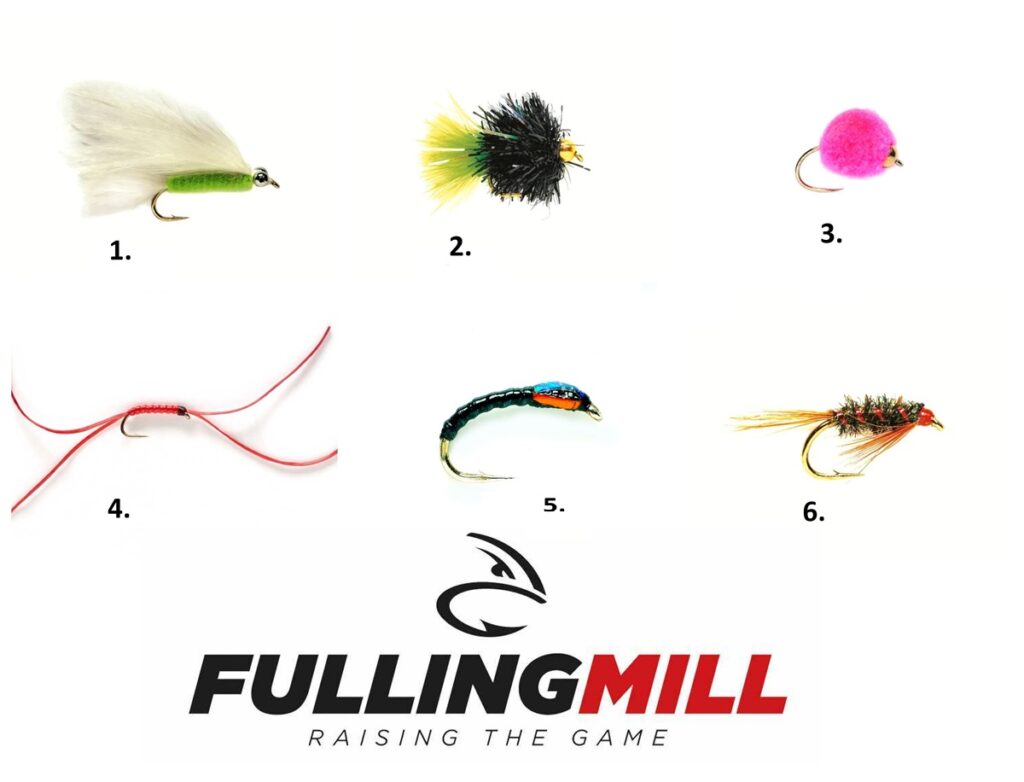
Top Tips for a Successful Winter Fishing Trip
Go at the Right Time – Midday is best when the water is slightly warmer. From 10am to 2pm are the peak times on a cold day.
Stay Warm – Cold hands make fishing difficult! Bring a flask of tea or coffee to warm up. Hand warmers work well, as do fingerless wool gloves.
Ask for Advice – Fishery staff and local anglers are always happy to help beginners out.
Check reports – You’ll have a better chance of catching fish in well-stocked lakes. Check the fishery Facebook pages regularly for reports and stocking activity.
Fish Slow and Deep – Trout are less active in cold water, so retrieve your fly slowly. Use a longer leader or a weighted fly to get deeper where fish are holding.
Try the ‘Bung’ (Indicator) Method – This is one of the easiest ways to fish in winter! Attach a small floating indicator (bung) and suspend a buzzer, egg, bloodworm or nymph underneath, start with 5 or 6 foot depth. Simply cast out and let it sit – when the bung moves, lift!
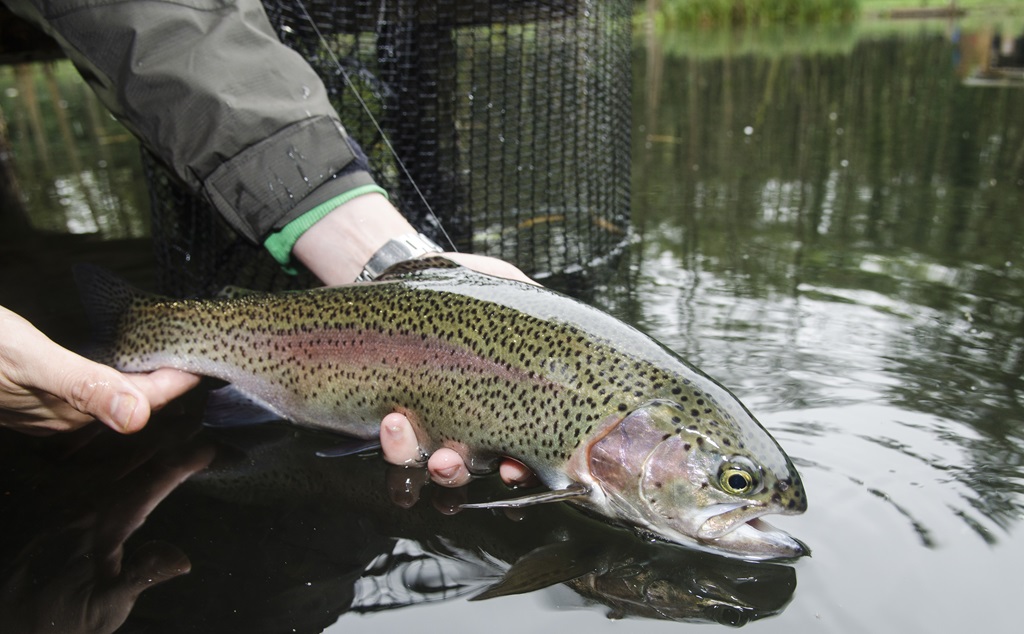
Where to Fish – Suggested Welsh Stillwaters for Beginners
These Welsh fisheries are great places to start:
Foxhill Fishery (Haverfordwest)
Garnffrwd Fishery (Carmarthenshire)
Papermill Fishery (Swansea)
Ynys-y-fro (Newport)
Dare Valley (Aberdare)
Tan-y-Mynydd (Abergele)
Nine Oaks Angling Centre (New Quay)
Eisteddfa Fishery (Criccieth)
Chirk Fishery (Wrexham)
Wal Goch (Mold)
Crynant Fishery (Neath)
Abernant Fishing Lake (Pontrhydyfen)
Bigwell Fishery (Monmouth)
These fisheries have on-site facilities, friendly staff, and sometimes tackle hire and tackle available, making them ideal for beginners.
Final Thoughts
Winter fly fishing in Wales is a fantastic way to improve your skills and enjoy a peaceful day outdoors. With the right approach, you’ll have a great chance of catching your first winter rainbow trout.

